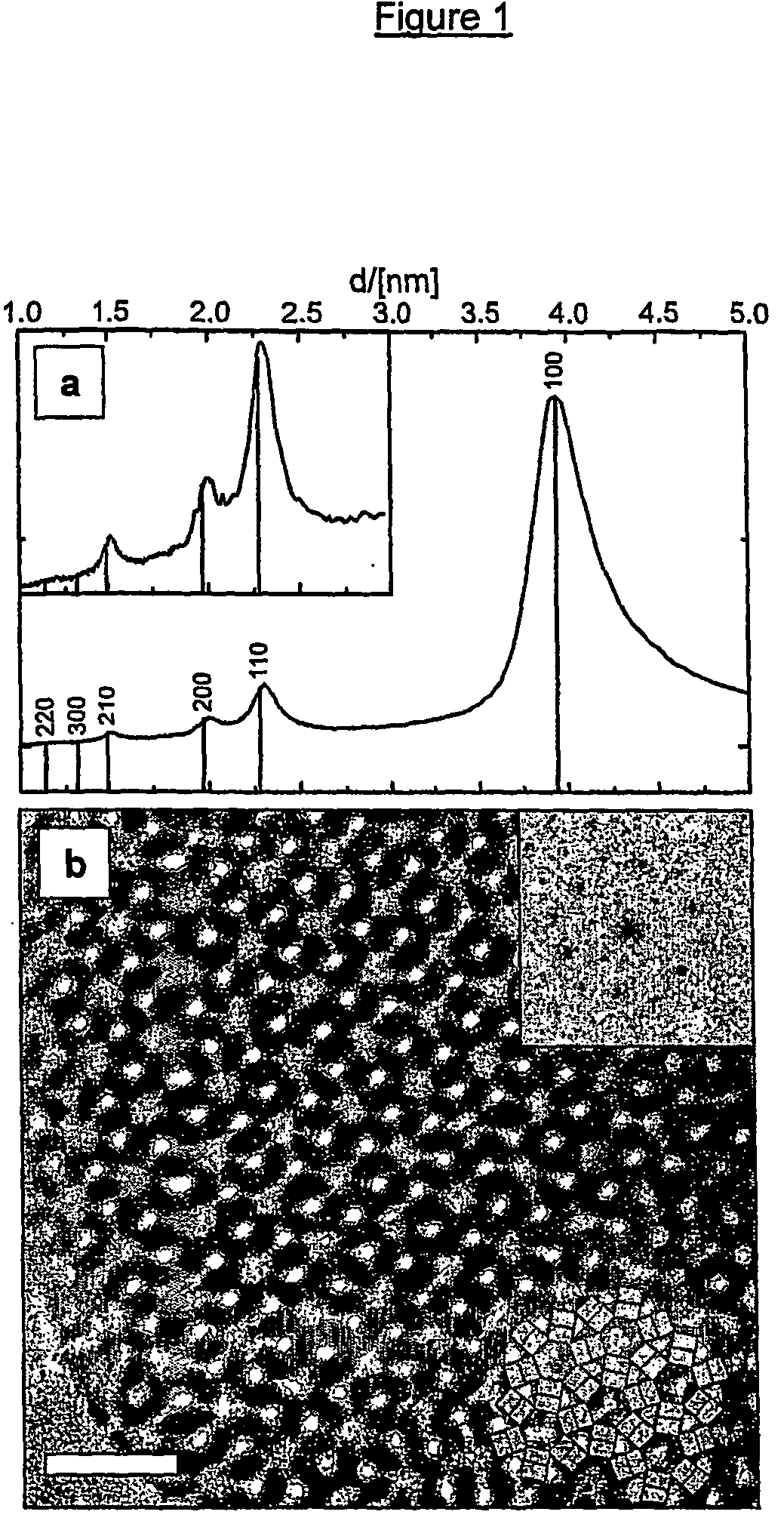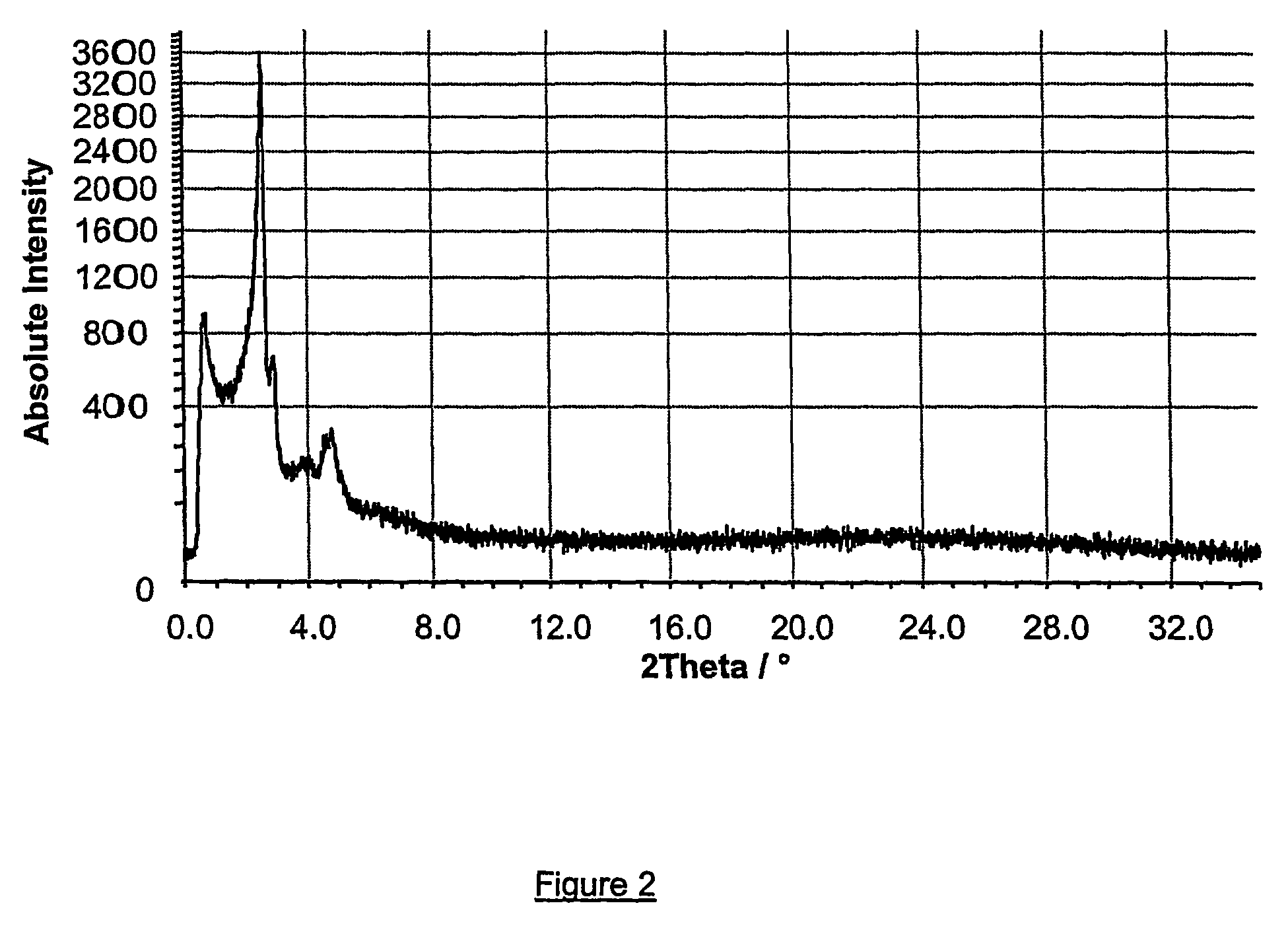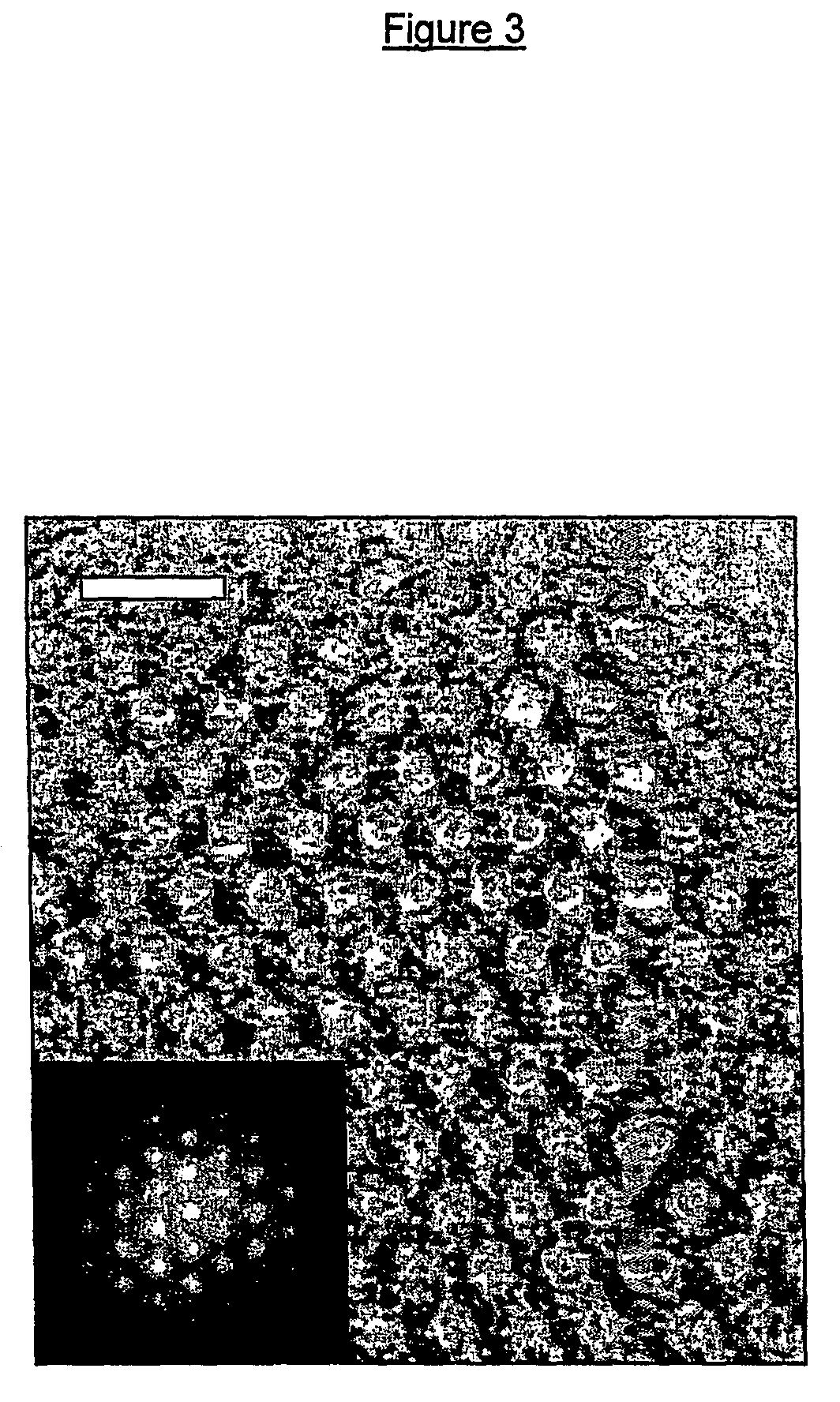Crystalline mesoporous oxide based materials useful for the fixation and controlled release of drugs
a technology of mesoporous oxide and crystalline silica, which is applied in the direction of silicon oxides, molecular sieve silica-polymorphs, silicon compounds, etc., can solve the problems of limiting the molecular size of a reactant which can be utilized in catalyst conversion reactions, etc., and the pore size of zeolite cannot exceed the microporous limit, etc., to achieve the effect of improving the reproducibility of mesop
- Summary
- Abstract
- Description
- Claims
- Application Information
AI Technical Summary
Benefits of technology
Problems solved by technology
Method used
Image
Examples
example 1
[0074]Nanoslabs were prepared through hydrolysis of tetraethyl ortho-silicate (37.32 g, commercially available from Acros, 98% purity) in 32.13 g of an aqueous tetrapropylammonium hydroxide solution (40% by weight concentration) under stirring. After hydrolysis, 30.55 g water was added and stirring Continued for 24 hours. Nanoslab size (dimensions of 1.3×2.0×4.0 nm3 in this embodiment) is controlled by synthesis conditions.
[0075]Then 60 g of a 10% by weight aqueous solution of cetyltri-methylammonium bromide (commercially available from Acros, 99% purity) heated at 80° C. was combined with 20 g of the nanoslab suspension under continuous stirring for 20 minutes. The precipitate was then recovered by filtration, washed with water and dried at 60° C. for 2 days. The organic templating organic molecules (tetrapropylammonium hydroxide and cetyltrimethylammonium bromide) were removed by slurrying 3 g of the resulting solid in 200 mL ethanol containing 0.02 mole nitric acid at 77° C. for ...
example 2
[0078]10 g of a Pluronic P123 triblock copolymer (commercially available from BASF, formula EO20PO70EO20) was dissolved in 90 g water under stirring. 24 g of this solution was combined with 8 g of a 5 M HCl aqueous solution. 18 g of a nanoslab suspension prepared under similar conditions as in the first step of example 1 but with dimensions of 1.3×8.0×4.0 nm3 (obtained through acidification of nanoslab suspension) was slowly combined with another 9 g 5 M HCl solution under vigorous stirring and finally combined with the acidic triblock copolymer solution. The mixture was heated at 90° C. under quiescent conditions during 4 days. A solid product was formed and separated from the liquid by centrifugation at 12,000 rpm. The product was washed with water until pH exceeds 3. The sample was dried at 60° C., and finally calcined at 350° C. with a temperature with a temperature increase of 0.5° C. / minute.
[0079]High-resolution electron microscopy (HREM) was used to characterise the structura...
example 3
[0081]6 g of cetyltri-methylammonium bromide (commercially available from Acros, 99% purity) in powder was slowly added to 20 g of the nanoslab suspension prepared according to example 1 under vigorous stirring, followed by addition of 60 g water. The slurry was stirred for 24 hours and subsequently heated at 100° C. for 72 hours under quiescent conditions. The resulting precipitate was then treated by the same method as in example 1.
[0082]Powder X-ray diffraction (XRD), shown in FIG. 2, and high-resolution electron microscopy (HREM) were used to characterise the structural order of the material obtained, named Zeotile 2. As shown in FIG. 2, the XRD spectrum did not reveal internal nanoslab information but only information related to the tiling pattern of said nanoslabs, all characteristic peaks being located at angles θ below 3 degrees (2θ below 6 degrees). Individual dispersed nanoslabs, presumably because of their small size, did not give rise to Bragg type diffraction related to...
PUM
| Property | Measurement | Unit |
|---|---|---|
| interplanar spacings | aaaaa | aaaaa |
| sizes | aaaaa | aaaaa |
| pore sizes | aaaaa | aaaaa |
Abstract
Description
Claims
Application Information
 Login to View More
Login to View More - R&D
- Intellectual Property
- Life Sciences
- Materials
- Tech Scout
- Unparalleled Data Quality
- Higher Quality Content
- 60% Fewer Hallucinations
Browse by: Latest US Patents, China's latest patents, Technical Efficacy Thesaurus, Application Domain, Technology Topic, Popular Technical Reports.
© 2025 PatSnap. All rights reserved.Legal|Privacy policy|Modern Slavery Act Transparency Statement|Sitemap|About US| Contact US: help@patsnap.com



